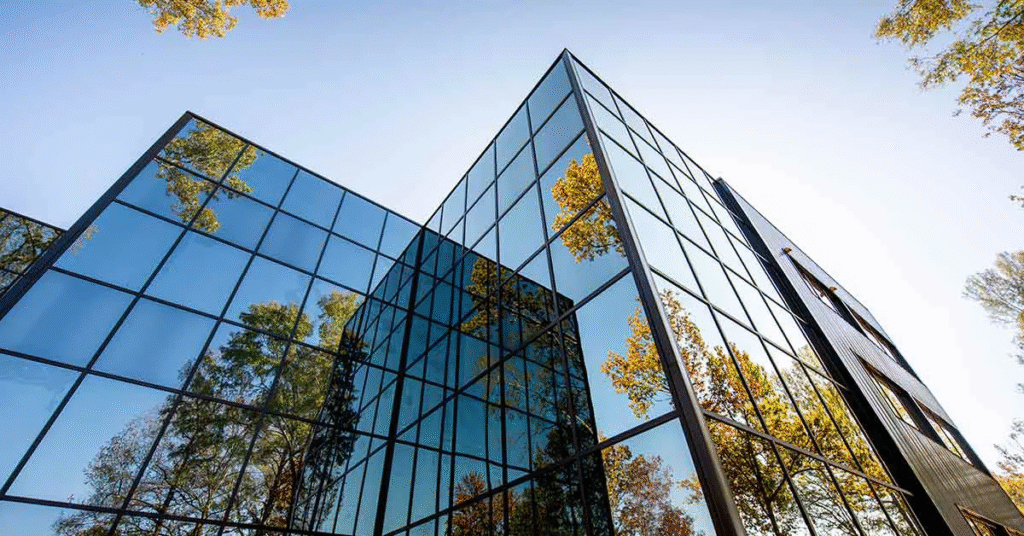Now Reading: 46% Office Leasing Spike Reveals Positive Shift in Demand
-
01
46% Office Leasing Spike Reveals Positive Shift in Demand
46% Office Leasing Spike Reveals Positive Shift in Demand

Table of Contents
Domestic occupiers office leasing has reached 46% of total leasing activity across major Indian cities, according to a recent market report. This trend marks a significant shift in the country’s commercial real estate landscape, where domestic firms are now emerging as dominant players in acquiring prime office spaces.
Key Takeaway From the Report

The commercial real estate market, which had long been dominated by multinational corporations and global tech giants, is now witnessing a remarkable resurgence of Indian businesses. The latest data indicates that nearly half of all office leasing transactions are being driven by domestic occupiers — a clear sign of increased confidence in India’s economic and business environment.
According to the report by a leading real estate consultancy, Indian companies captured 46% of office leasing in Q1 2025, surpassing expectations and outperforming international tenants in most metro cities. This growth comes amidst a backdrop of rising demand for flexible workspaces, hybrid office models, and expanding regional business hubs.
Domestic Players Gaining Ground
Sectors contributing to this surge include banking and financial services, manufacturing, telecom, and fast-growing tech startups. Indian enterprises have accelerated their expansion plans, especially in cities like Bengaluru, Mumbai, Hyderabad, Pune, and Delhi-NCR.
Experts believe this growth has been supported by strong GDP numbers, increased corporate hiring, and a shift in workplace strategies. As multinational corporations continue to consolidate or downsize, Indian firms are stepping in to fill the space.
“Domestic occupiers are not only leasing more space, but they are also opting for high-quality Grade-A office assets, reflecting a matured and long-term strategic mindset,” the report noted.
Leasing Breakdown by Sector
Among all sectors, the IT & ITeS (Information Technology Enabled Services) industry led the overall leasing activity but with a reduced share, allowing domestic companies in BFSI (Banking, Financial Services & Insurance), manufacturing, and logistics to rise.
- Banking & Finance: Many Indian banks and NBFCs (Non-Banking Financial Companies) have increased their physical presence to strengthen regional operations.
- Startups & Unicorns: Venture-backed Indian startups continue to prefer metropolitan hubs for head offices, contributing a significant share to new leases.
- Telecom and Engineering: These industries are revamping their infrastructure footprint to support growing data and manufacturing needs.
This broad sectoral representation underscores how widespread and sustainable the demand from domestic occupiers has become.
City-Wise Performance
The report highlights that certain cities have particularly benefited from the increased activity by Indian firms:
- Bengaluru: Remains the top office leasing destination, with domestic occupiers contributing 48% of total deals.
- Mumbai: Registered a 45% domestic leasing share, led by finance and legal sectors.
- Hyderabad: Recorded a domestic share of 47%, thanks to aggressive expansion by tech and telecom players.
- Pune and Chennai: These cities witnessed strong activity from mid-sized Indian companies looking to decentralize operations.
This trend shows that the office market is not just recovering but restructuring itself around new demand pillars — primarily domestic.
Changing Office Preferences
A notable observation in the report was the evolving preference of Indian companies regarding the type of office spaces they occupy.
- Premium Offices: There’s a sharp rise in demand for Grade-A buildings with better air quality, amenities, and green certifications.
- Flexible Workspaces: Co-working and managed spaces have gained popularity among smaller domestic firms and startups.
- Hub-and-Spoke Models: Companies are moving away from large centralized offices and instead opting for multiple small hubs.
The shift points toward a longer-term transformation in how Indian businesses perceive workplace utility and employee productivity.
Future Outlook for Domestic Occupiers Office Leasing
Looking ahead, domestic occupiers office leasing is expected to maintain its strong momentum through the rest of 2025. Industry analysts predict that Indian companies will continue capturing a substantial portion of new office supply, particularly in cities undergoing infrastructure improvements like new metro lines, expressways, and airport expansions.
With robust economic indicators and political stability, domestic firms are showing readiness to invest in physical spaces, which also boosts ancillary sectors like interior design, furniture, and facilities management.
Expert Commentary
Anuj Sharma, a senior real estate analyst, said, “The data shows a paradigm shift in the Indian office leasing market. Domestic occupiers are no longer secondary players; they are shaping demand, location strategy, and even rental negotiations.”
He added that this could lead to more balanced and resilient growth in the sector, especially if global headwinds persist. “Even if MNCs delay their expansion, domestic players will continue to propel the leasing activity.”
Impact on Commercial Real Estate

This upward trend is already influencing developer strategies. Builders and commercial space developers are redesigning their offerings to better suit Indian companies. Demand for tech-enabled workspaces, better energy efficiency, and location convenience is now coming from local businesses — a trend previously driven by global giants.
Further, commercial real estate investments are becoming more attractive to Indian investors and funds, who now see better returns backed by domestic tenant reliability.
Conclusion
The surge in domestic occupiers office leasing to 46% is not just a numerical milestone but a deeper signal of India’s maturing business landscape. It reflects the growing confidence of Indian companies to compete, expand, and operate at global standards.
As domestic businesses become the driving force in office space demand, the commercial real estate market is poised for a more stable and diversified future. The next few quarters will likely confirm whether this trend sustains — but for now, the numbers tell a compelling story of resilience and local strength.
Also Read – Shocking Facts Blocking Hyderabad Techie Marriages Today





















